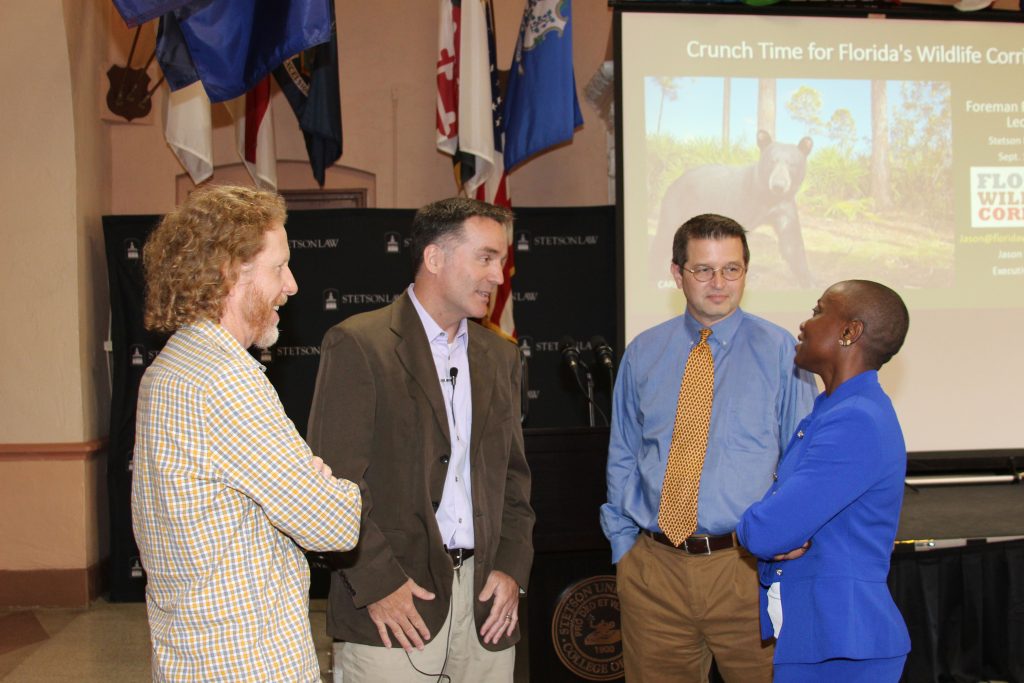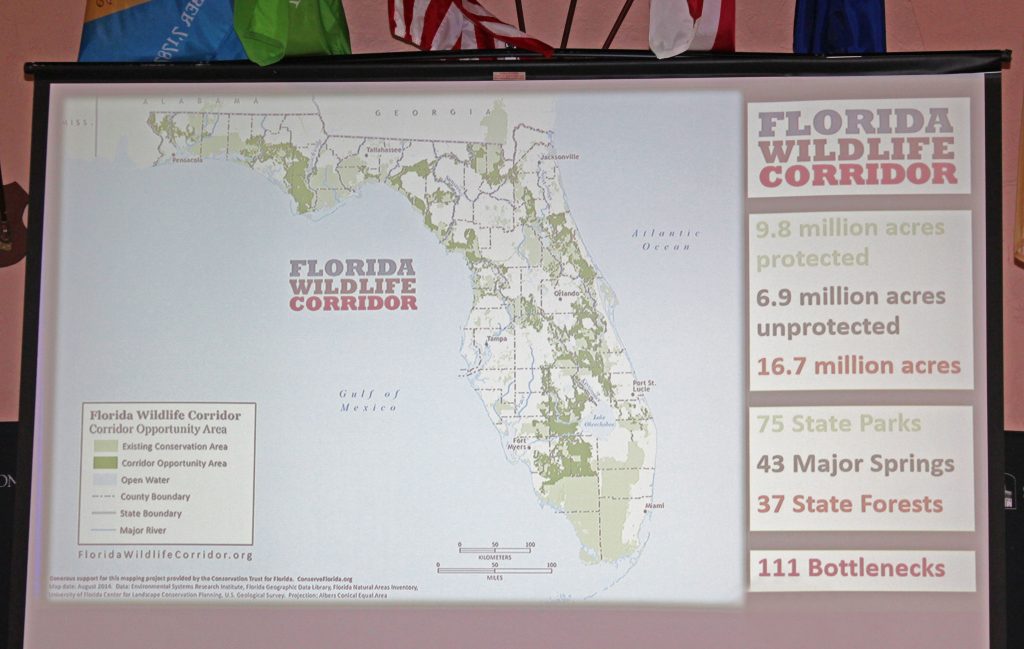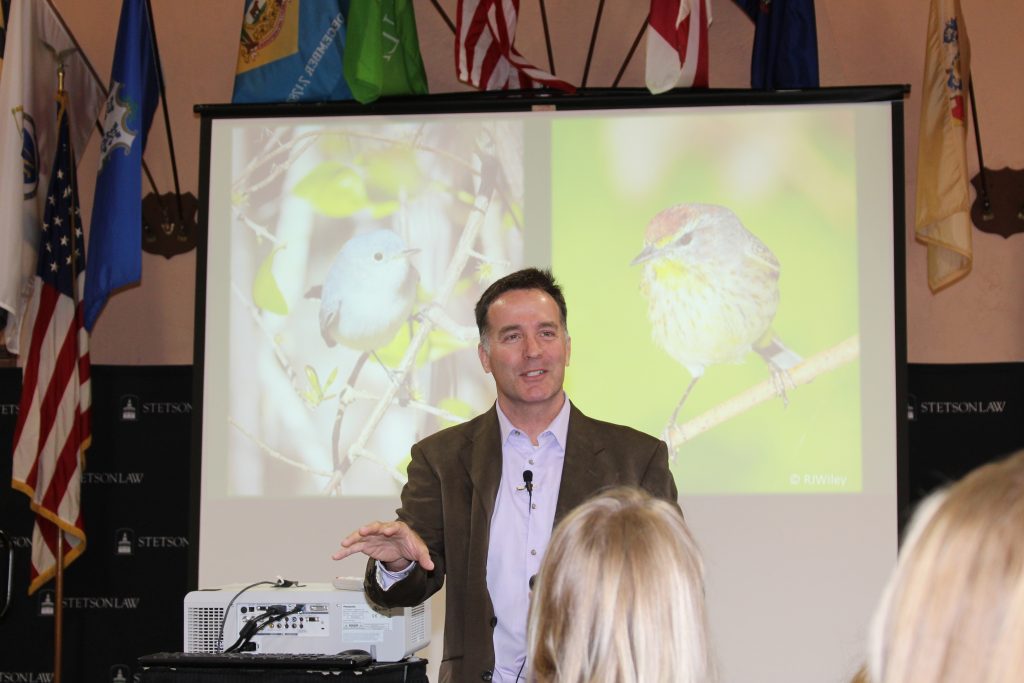Protecting Florida’s Wildlife Corridor is key to preserving state’s natural beauty and diversity

By Taylor Allyn
On Sept. 12, the Stetson Law community welcomed Jason Lauritsen, the Executive Director of the Florida Wildlife Corridor, to speak as a part of the Foreman Biodiversity lectures. The Florida Wildlife Corridor is a non-profit organization seeking to protect and educate the public about the corridor, which is a path through the state connecting land and waters that are integral for native habitats.

Lauritsen began his talk by impressing upon the audience the importance of preserving this undeveloped land in Florida. He explained that 1,000 people move to Florida every day—by 2070, there will be 11 million more people in the state. There is a race against time to accommodate that influx of people while maintaining the beauty and health of the natural environment. According to Lauritsen, the wildlife corridor is a solution to this problem. Right now, almost 10 million acres of the wildlife corridor are protected in the form of state parks, forests, and springs, but almost 7 million acres remain unprotected. He stressed that Florida’s natural beauty and biodiversity is not guaranteed for the future if there is not a movement to protect it.
Lauritsen’s goal is to educate the public and decisionmakers on the importance of preserving and protecting the corridor. The Florida Wildlife Corridor works with state agencies, regional conservation programs, legislators, and task forces to identify ways to maintain and protect Florida wildlife. They also work with local farmers and ranchers to establish conservation easements and create alternate solutions to protect large swaths of land.

Negative impacts in the natural world are not always easily apparent, Lauritsen said. He cited an example of a type of caterpillar that feeds on cypress trees. These caterpillars are food for many kinds of songbirds, and are also hosts to parasitic wasp larvae, which are important native pollinators. Hurricane Irma wiped out the foliage of these cypress trees in many places, leaving caterpillars without food and causing a chain reaction that affected birds, wasps, and plant life.
“If all we appreciate is the beauty and we don’t understand how it works, we are going to make the wrong decisions,” he said. “I like to think of this as taking advantage of the long lens of history and the fine focus of science as we progress to try to find solutions.”
He went on to address the problem of isolation in native habitats. The more isolated a species is, the less genetic diversity they have. Connecting habitats through the wildlife corridor is especially important for black bears and Florida panthers, who need access to different habitats at different times.

Lauritsen ended the talk by discussing multiple pieces of legislation that have been created to improve wildlife conservation, including a bill that would create a wildlife crossing pilot program to reduce the incidences of vehicle and wildlife collisions. Lauritsen urged the audience to get in touch with legislators and let them know these bills are important.
Florida is currently collecting public input and recommendations for a toll road bill that was signed into law earlier this year, and Lauritsen sees this as a chance to make a difference in the future of Florida’s infrastructure.
“Our hope is that through this planning process, [we can] push our leadership to recognize and instill ecological values for future generations.”
For 10 ways you can help connect with the Florida Wildlife Corridor, check out their website, floridawildlifecorridor.org. You can also watch the entire lecture online at Stetson Law’s YouTube channel.
Post date: Oct. 24, 2019
Media contact: Kate Bradshaw
[email protected] | 727-430-1580